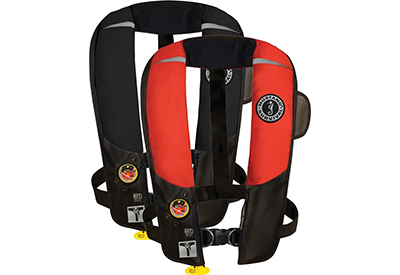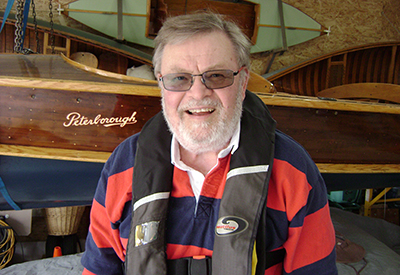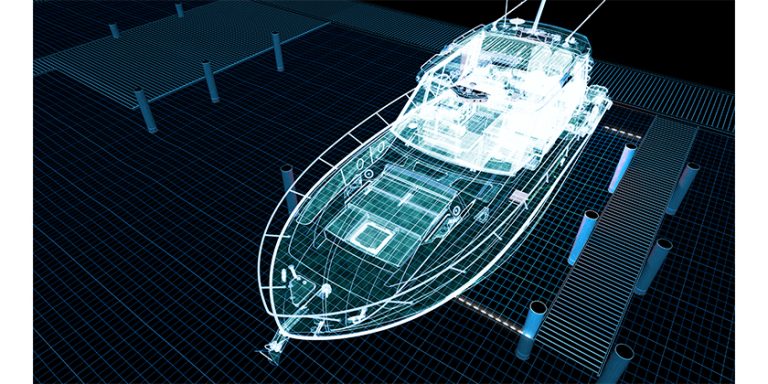Safety: Care for your Inflatable PFDs

Sept 24, 2020
By John Gullick, Canadian Power and Sail Squadrons, Manager of Government and Special Programs.
I often get asked if regular care and maintenance is necessary for inflatable PFDs. Here is a rather lengthy answer to the question and some recommendations. The sources of this information come courtesy from Mustang Survival. The information has been edited to reflect approved inflatable Personal Flotation Devices (PFDs) sold in Canada.
PFDs are preferred by many boaters because they are very comfortable to wear and this often outweighs their higher cost.
But note these important regulations:
1. They can save a life and in Canada, when the vessel is underway and the wearer is on deck, they are only approved when worn.
2.They are not approved for use by people under the age of 16 and those operating personal watercraft.
However many users are not aware that they need a level of regular care and maintenance.
Automatic inflatables are activated by a combination of a chemical bobbin and a carbon dioxide cylinder. The bobbin dissolves when immersed in a liquid. This allows a spring loaded firing pin to puncture the CO2 cartridge which in turn inflates the PFD in about 3 seconds with approximately 35 pounds of buoyancy.
If the PFD does not automatically inflate the wearer can manually inflate using the pull tab or orally inflate the PFD by blowing into a tube that has a one way valve.
At the start of each season and at regular intervals the PFD should be checked to ensure the mechanism is packed according to the manufacturers instructions and that a fully charged CO2 cylinder is in place and properly secured. For automatics with the bobbin, make sure it is secure in its holder (it only fits one way), the firing pin retracts and the green indicator is visible. If the red indicator is visible then something is wrong with the bobbin or the holder is not properly screwed down all the way. If the PFD has no bobbin holder then it can only be inflated manually.
In some models the tip of the CO2 cartridge screws in and others have a bayonet mount.
The screw in type needs to be firmly attached and the bayonet mount needs to be pushed in and given a 1/8 turn clockwise to a full stop. If the cylinder has not been turned the mechanism is will eject. The green indicator will not be visible without fully turning the cylinder and if it is not properly in place the unit will not inflate.
If an automatic inflatable is accidentally activated by moisture then it will need to be dried out properly before a new bobbin and CO2 cartridge are installed. Rearming a wet
PFD will only cause the bobbin to dissolve and activate the new CO2 cartridge.
A hair dryer on low heat can be used if you need to rearm the inflatable quickly but it is best to let it dry out in a warm, not hot, dry location before rearming.
A manual inflatable can be rearmed immediately.
When inspecting the bobbin be sure the “ridges” are still evident, there are no cracks and the white fill in portion is not discoloured. The date on the side of the bobbin is the date of manufacture, not an expiration date. If properly used and maintained most bobbins have a three year life span, dependent on usage, however it is recommended that they be replaced annually. CO2 cartridges can last for years.
When purchasing a rearm kit be sure it is the correct one for your model of PFD and that the CO2 cartridge is the correct size. High Lift models use a larger cartridge.
The latest Hydrostatic models activate by water presser when they reach a depth of 8 centimetres or more below the waters surface. If undisturbed the hydrostatic inflators require no maintenance for a period of five years.
Most inflatable PFDs have an indicator window which allows you to quickly check if the system is a go or a no go. Other models require the opening up of the cover to check the green pin on the activator.
Always refer to the manufacturer’s owner manual when reviewing the maintenance and basic care of your inflatable.
 Meet John Gullick
Meet John Gullick
John is currently Manager of Government and Special Programmes, Canadian Power and Sail Squadrons responsible for government relations and the management of two national programmes mandated by Transport Canada, Office of Boating Safety and Industry Canada, special projects and staff supervision.
John writes “Just Ask John for the CPS’ Port Hole. This article and others are “Second Time Around”
His many achievements in the boating field include:
• Past Chair Canadian Safe Boating Council, 1999 –
• Co Chairman, Recreational Boating Advisory Committee to the National Canadian Marine Advisory Council, 2007 –
• Management of the Pleasure Craft Operator Card and the Restricted Operator Certificate (Maritime) programmes provided through 150 Squadrons, 400 independent Recognized Providers/Examiners and a number of Provincial Partner Organizations.
• Past Chair of the Peterborough Dragon Boat Festival. Considered to be one of the world’s largest single day community event of its kind now in its 20th year.




























